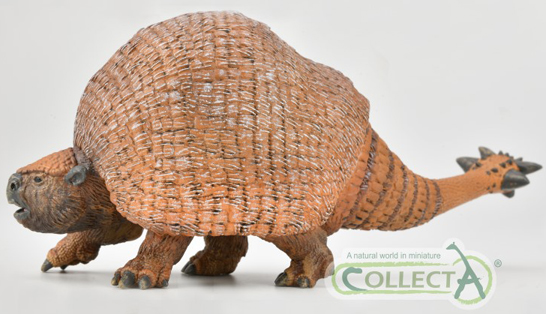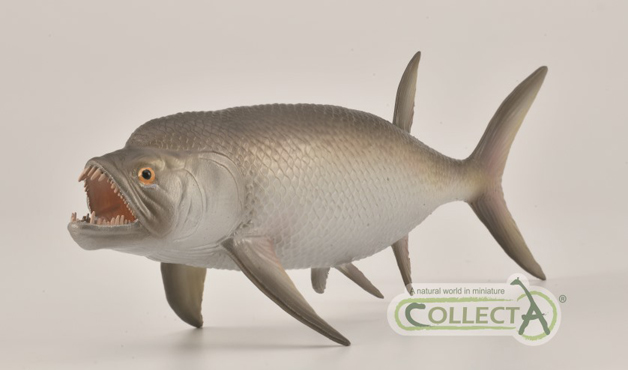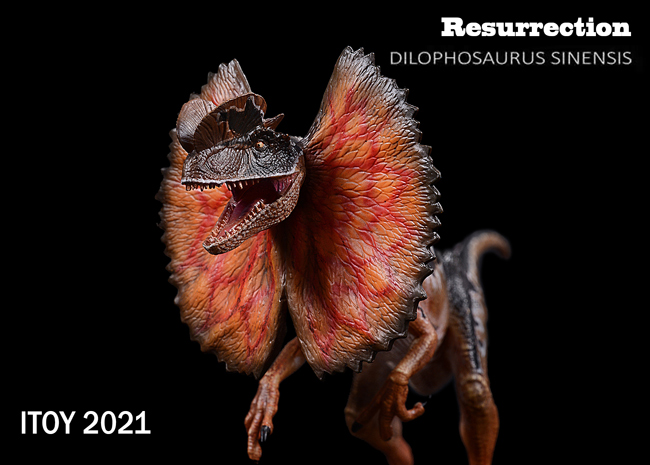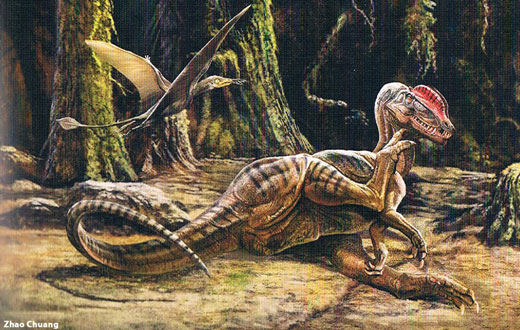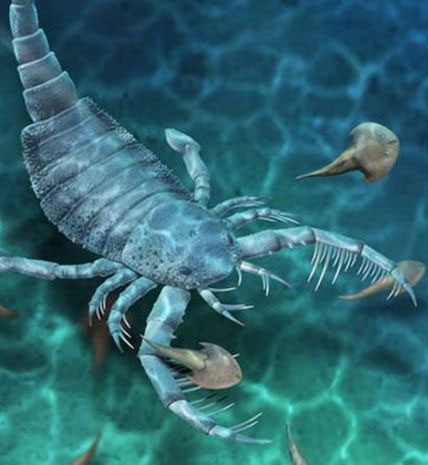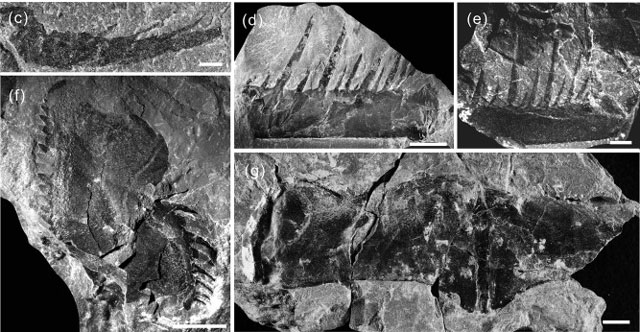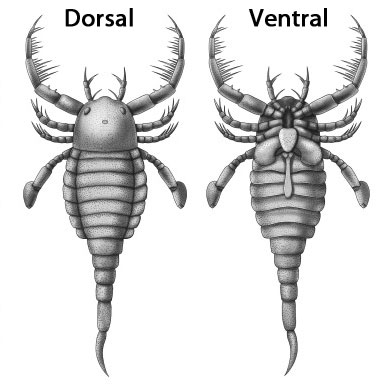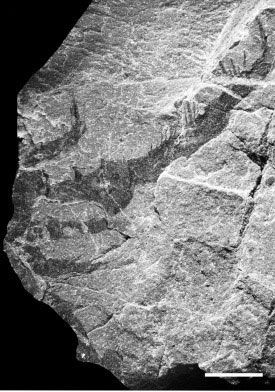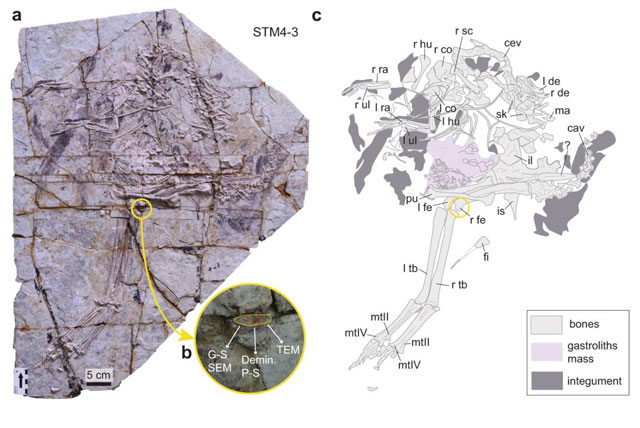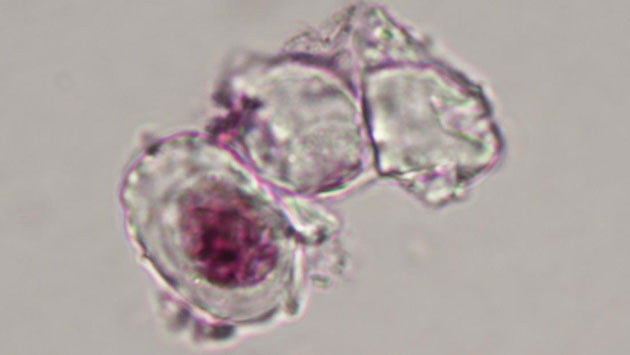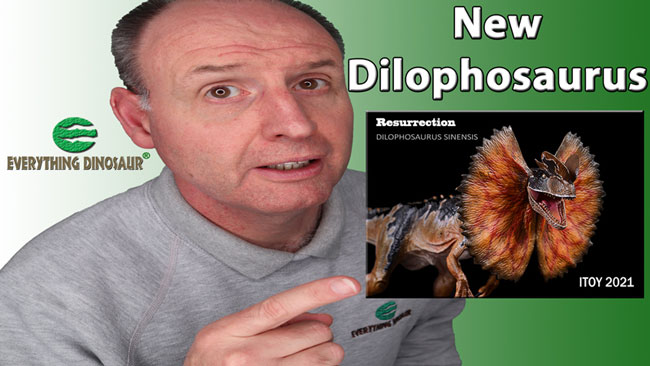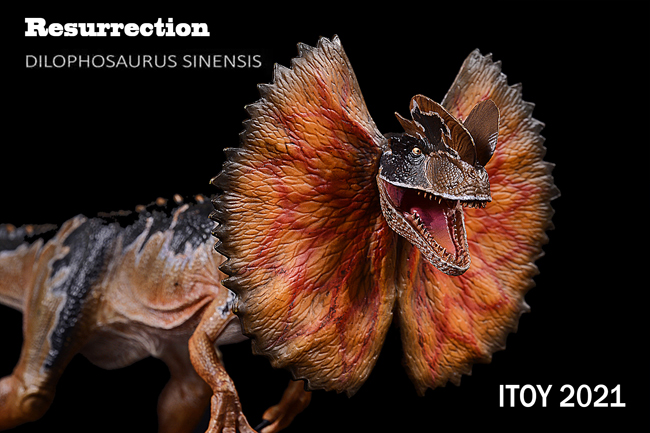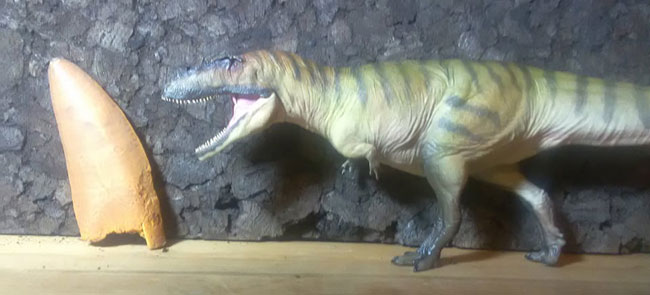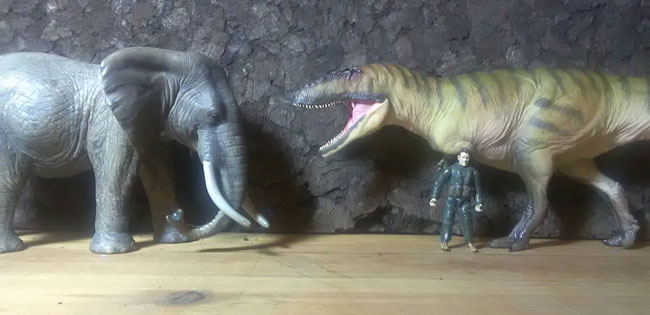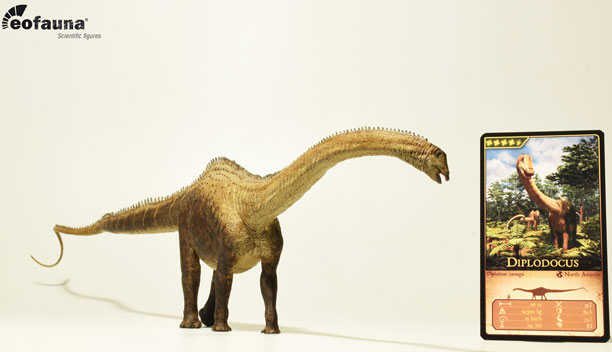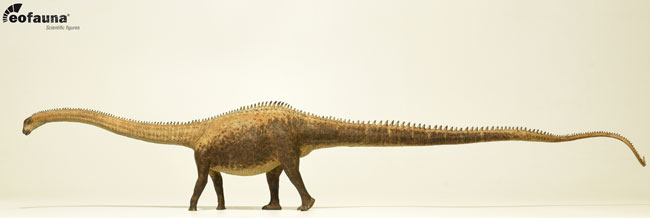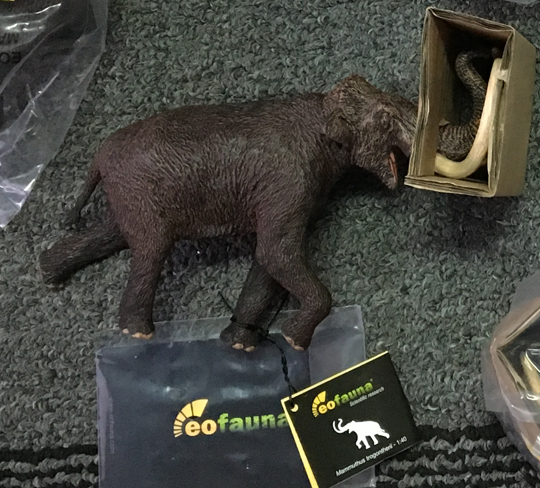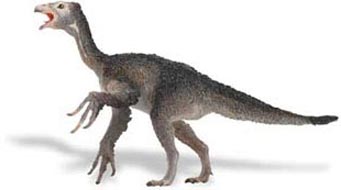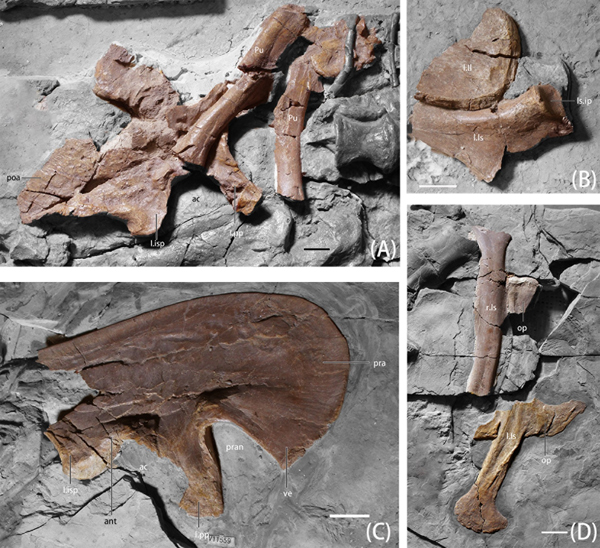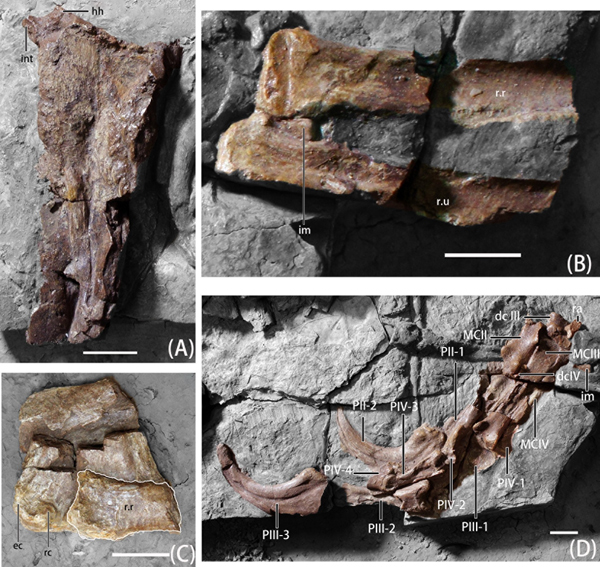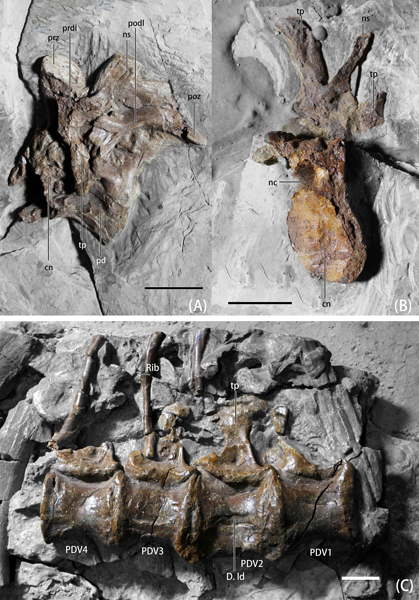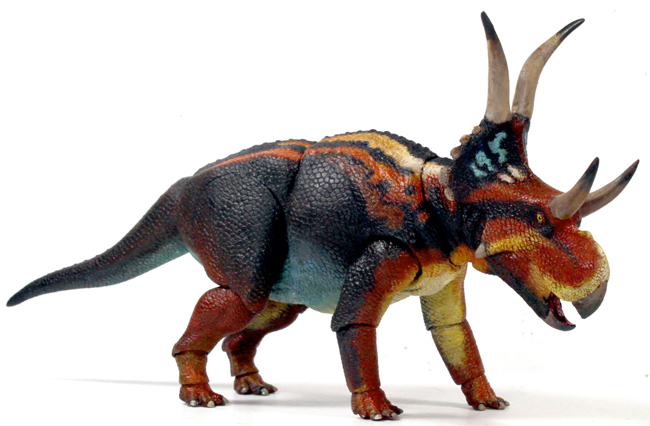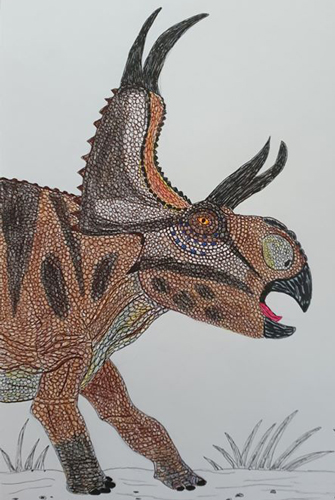New CollectA Deluxe Models in Stock
The remaining CollectA Deluxe prehistoric animal models that Everything Dinosaur are going to get this year have arrived and are now available from the UK-based mail order company. The new for 2021 CollectA Deluxe models include the 1:40 scale Dilophosaurus, a replica of the ferocious Cretaceous fish – Xiphactinus and a 1:20 scale model of the glyptodont Doedicurus.
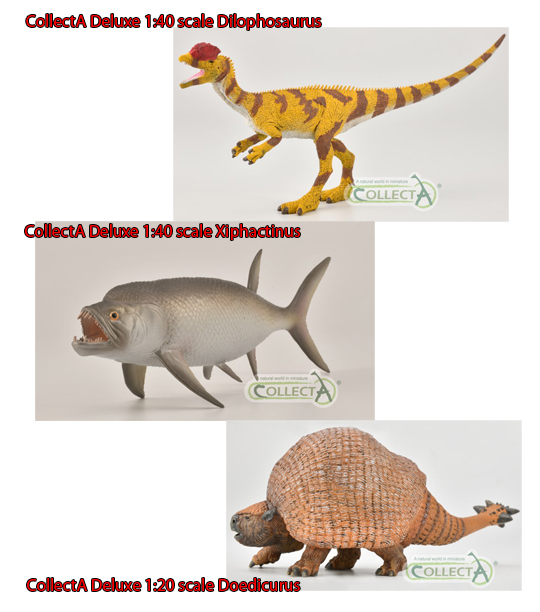
New for 2021 CollectA Deluxe models in stock at Everything Dinosaur. The 1/40th scale Dilophosaurus (top), the 1:40 CollectA Deluxe Xiphactinus (middle) and the CollectA Deluxe 1;20 scale Doedicurus (bottom). Picture credit: Everything Dinosaur.
Picture credit: Everything Dinosaur
The eagerly anticipated CollectA Deluxe Pteranodon will not be in stock at Everything Dinosaur until next year (2022).
Deluxe Models
The CollectA Deluxe range comprises the figures and replicas that have a declared scale. The general scale used for dinosaur figures is 1:40 hence the 1/40th scale Dilophosaurus model. For prehistoric mammals, CollectA use a scale of approximately 1:20. For example, the new Deluxe Doedicurus is in 1:20 scale.
Model collectors and fans of prehistoric animals know that these scales are only arbitrary, there are so many dinosaurs and prehistoric mammals in the Deluxe range representing very different sized animals that these suggested scales can, at best, only be regarded as approximate guides.

The new for 2021 CollectA Deluxe 1:40 scale Dilophosaurus dinosaur model. Picture credit: Everything Dinosaur.
Xiphactinus – Deadly Marine Predator
When Everything Dinosaur team members first announced the CollectA model line-up for 2021, there was much excitement about the addition of a Xiphactinus replica. Several species of Xiphactinus have been named and described. Fossil remains have been found in South America, Europe and most famously North America. Many almost complete and articulated specimens have been excavated from the Smoky Hill Chalk Member of the Niobrara Formation. With an estimated body length approaching six metres, Xiphactinus was one of the largest members of the extinct Ichthyodectidae family.
The Everything Dinosaur website: Dinosaur Models and Figures.
A spokesperson from Everything Dinosaur commented:
“There have been huge problems with production, shipping and distribution, it is great to see these three models in stock and we look forward to announcing the new for 2022 CollectA Deluxe replicas in the very near future.”
To view the range of CollectA Deluxe figures, including the new Xiphactinus, Dilophosaurus and the 1:20 scale Doedicurus models: CollectA Deluxe Prehistoric Life.
Model collectors and fans of prehistoric animals know that these scales are only arbitrary, there are so many dinosaurs and prehistoric mammals in the Deluxe range representing very different sized animals that these suggested scales can, at best, only be regarded as approximate guides.

The new for 2021 CollectA Deluxe 1:40 scale Dilophosaurus dinosaur model. Picture credit: Everything Dinosaur.
Xiphactinus – Deadly Marine Predator
When Everything Dinosaur team members first announced the CollectA model line-up for 2021, there was much excitement about the addition of a Xiphactinus replica. Several species of Xiphactinus have been named and described. Fossil remains have been found in South America, Europe and most famously North America. Many almost complete and articulated specimens have been excavated from the Smoky Hill Chalk Member of the Niobrara Formation. With an estimated body length approaching six metres, Xiphactinus was one of the largest members of the extinct Ichthyodectidae family.
The Everything Dinosaur website: Dinosaur Models and Figures.
A spokesperson from Everything Dinosaur commented:
“There have been huge problems with production, shipping and distribution, it is great to see these three models in stock and we look forward to announcing the new for 2022 CollectA Deluxe replicas in the very near future.”
To view the range of CollectA Deluxe figures, including the new Xiphactinus, Dilophosaurus and the 1:20 scale Doedicurus models: CollectA Deluxe Prehistoric Life.
[/fusion_text][/fusion_builder_column][/fusion_builder_row][/fusion_builder_container]


